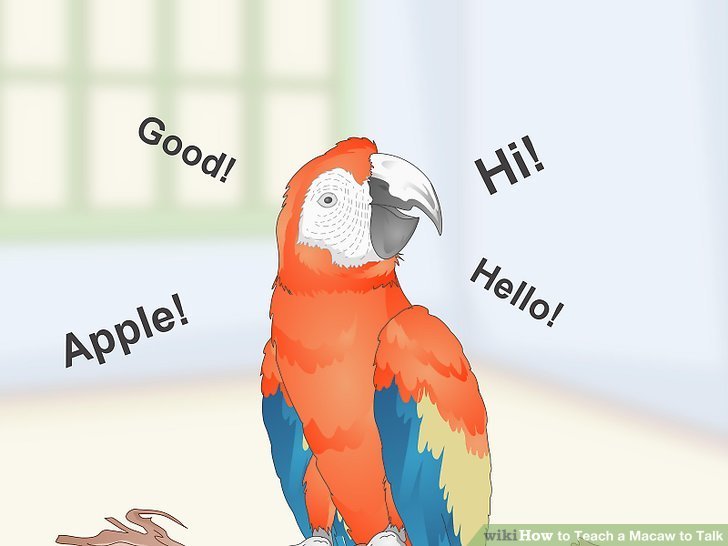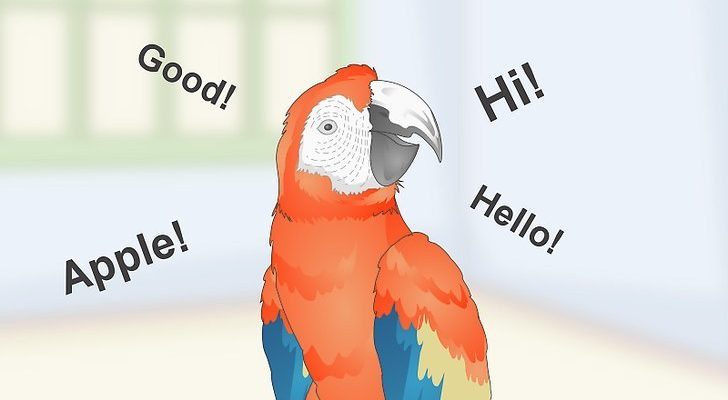
If you’ve got a curious mind and a macaw by your side, you’re in for a treat. Not only are these birds known for their social personalities, but their brainpower is pretty surprising too! In this article, we’ll dive into the fascinating world of macaws and explore how to teach them to mimic your favorite phrases and words. Grab your coffee, and let’s get started!
Why Macaws Can Talk
You might be wondering, why are macaws so chatty? Well, the ability to mimic human speech comes from their natural environment. In the wild, these birds are highly social and rely on vocalizations to communicate with their flock. When they form bonds with humans, they often mirror the sounds they hear, much like how we pick up accents or phrases from those around us.
Macaws have a specialized vocal organ called a syrinx, located at the base of their trachea. This allows them to produce a wide range of sounds. Think of it as their version of a vocal box, but way more versatile! It’s not exactly the same as us talking, but it’s pretty impressive how they can imitate sounds, laughter, and even the ring of a telephone.
Another interesting factor is their intelligence. Macaws are among the most intelligent bird species, which is one reason they can learn so well. Their brains are wired for social interaction and learning, making them excellent candidates for vocal imitation.
Getting Started: The Right Environment
To set your macaw on the path to becoming a chatterbox, creating the right environment is crucial. You want to make sure your feathered friend feels comfortable and safe. Here’s how to do it:
- Choose a Quiet Area: Start in a calm, quiet space where your macaw won’t be distracted by loud noises or other pets. This helps them focus on what you’re saying.
- Bond with Your Macaw: Spend time with your macaw daily. Talk to them, play with them, and let them get used to your voice. Building trust is key!
- Use Positive Reinforcement: When your macaw attempts to mimic a sound or word, reward them with a treat or praise. This encourages them to keep trying.
Creating a positive learning environment is about more than just a quiet space; it’s about building a connection. The more comfortable and loved your macaw feels, the more eager they’ll be to engage and learn.
Choosing Words and Sounds to Teach
Now that you’ve set the stage, you need to think about which words or sounds you want your macaw to mimic. Here’s a straightforward approach:
- Start Simple: Choose short, simple words like “hello,” “bye-bye,” or “thank you.” These are easy for them to grasp and there’s a natural context in which to use them.
- Use Repetition: Repetition is vital. Say the chosen word or phrase consistently, so your macaw associates it with the action or situation.
- Be Enthusiastic: Your energy matters! Use a cheerful and enthusiastic tone when you speak. Birds pick up on emotions, and a happy voice is likely to make a more significant impact.
Remember, patience is key. Just like teaching a toddler to talk, it takes time and consistency to help your macaw learn effectively.
Practice Makes Perfect
Once you’ve chosen your words and set up the right environment, it’s time to start practicing. Here’s a simple plan to help you and your macaw get into a routine:
1. Daily Sessions: Dedicate 10-15 minutes each day to practice. Consistency is important to help your macaw learn.
2. Repeat After Me: Say the word or phrase clearly and slowly. You might even want to emphasize the sounds. For example, if you’re teaching “hello,” you can stretch it out like “heee-looo.”
3. Encourage Attempts: If your macaw makes an effort to mimic, even if it’s not perfect, praise them! This reinforces their attempts and helps them feel more confident.
Before you know it, you’ll hear your macaw starting to mimic sounds, and it’ll feel like you have your very own feathered friend performing stand-up comedy!
Common Challenges and How to Overcome Them
While teaching your macaw to talk can be rewarding, it’s not without challenges. Here are a few common hurdles and tips to tackle them:
- Distraction Issues: If your macaw gets distracted during practice, try a quieter location or limit distractions from other pets. Focus is essential.
- No Progress: If you don’t see improvement, don’t lose hope! Change your approach or try different words. Sometimes a fresh start can do wonders.
- Negative Reactions: If your macaw seems stressed or anxious, it might be best to take a break. Every bird learns at their own pace, and it’s important to be understanding.
Understanding your macaw’s behavior is crucial. Just like people, these birds have their mood swings too.
Keeping It Fun!
Learning should be enjoyable for both you and your macaw. Here are a few tips to keep things light and engaging:
- Incorporate Playtime: Mix learning with play. Use toys or activities that can involve your macaw while practicing words.
- Involve the Family: Make it a family affair! Get everyone involved to say the words together. The more voices, the better.
- Celebrate Milestones: When your macaw picks up a new word, celebrate it! Have a mini party or give them an extra treat to mark the achievement.
When learning becomes a fun experience, your macaw is more likely to stay engaged and excited about picking up new words.
Teaching your macaw to talk is truly an adventure filled with laughter and surprises. It’s not just about the end result; it’s about the bond you create through your shared experiences. As you embark on this journey, remember to be patient, consistent, and most importantly, have fun!
Over time, you’ll find that your macaw not only learns to mimic words but also creates a unique connection with you that words can’t quite capture. So go ahead, grab some treats, and let the teaching begin! Your feathery friend is ready to chat, and you’ll be amazed at what they can learn.

